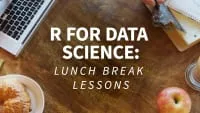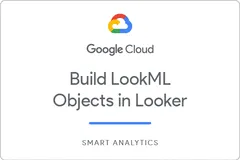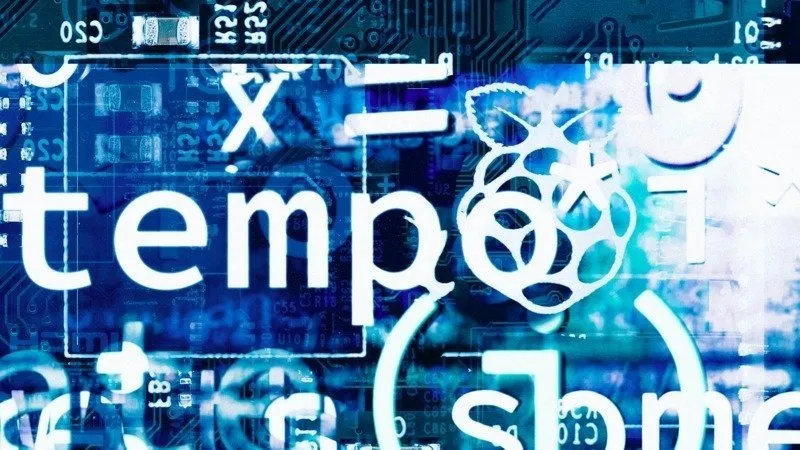
R for Data Science: Lunchbreak Lessons 
This weekly series provides an introduction to the R programming language, covering language features, development tools, and libraries to help make programming more efficient. Take a break from your day and learn R with these Lunchbreak Lessons. ▼
ADVERTISEMENT
Course Feature
![]() Cost:
Cost:
Free Trial
![]() Provider:
Provider:
LinkedIn Learning
![]() Certificate:
Certificate:
No Information
![]() Language:
Language:
English
Course Overview
❗The content presented here is sourced directly from LinkedIn Learning platform. For comprehensive course details, including enrollment information, simply click on the 'Go to class' link on our website.
Updated in [March 06th, 2023]
This course, R for Data Science: Lunchbreak Lessons, is designed to give you a building block that you can use in the next two hours at work. It is designed to help you review language fundamentals, learn how to improve existing R code, discover new and interesting features, and discover useful development tools and libraries that will make your time programming with R more productive.
The course begins with an introduction to the R language, including a review of the basic syntax and data types. You will then learn how to use the R language to manipulate data, create visualizations, and perform basic statistical analysis. You will also learn how to use the RStudio IDE to write and debug code.
Next, you will learn how to use the tidyverse package to improve your existing R code. You will learn how to use the dplyr package to manipulate data, the ggplot2 package to create visualizations, and the tidyr package to reshape data. You will also learn how to use the purrr package to write functions and the lubridate package to work with dates and times.
Finally, you will learn about some of the most popular R packages and libraries, such as the tidyverse, the caret package for machine learning, and the shiny package for creating interactive web applications. You will also learn about some of the most popular development tools, such as the RStudio IDE, the R Markdown language, and the Git version control system.
By the end of this course, you will have a better understanding of the R language and how to use it to manipulate data, create visualizations, and perform basic statistical analysis. You will also have a better understanding of the development tools and libraries available to you, and how to use them to make your programming with R more productive.
[Applications]
The application of this course can be seen in the ability to quickly review language fundamentals, improve existing R code, and discover new and interesting features. Additionally, participants can use the development tools and libraries learned in the course to make their programming with R more productive. Furthermore, the course can be used as a reference for future projects, allowing participants to quickly review the material and apply it to their work.
[Career Paths]
1. Data Scientist: Data Scientists use R to analyze large datasets and uncover insights. They use a variety of techniques such as machine learning, statistical modeling, and data visualization to uncover patterns and trends in data. As data becomes increasingly important in the business world, the demand for Data Scientists is growing rapidly.
2. Data Analyst: Data Analysts use R to analyze data and create reports. They use a variety of techniques such as data mining, statistical analysis, and predictive modeling to uncover insights from data. Data Analysts are in high demand as businesses look to make data-driven decisions.
3. Data Engineer: Data Engineers use R to build and maintain data pipelines. They use a variety of techniques such as ETL (Extract, Transform, Load) processes, data warehousing, and data modeling to ensure data is properly stored and managed. As businesses look to leverage data more effectively, the demand for Data Engineers is growing rapidly.
4. Machine Learning Engineer: Machine Learning Engineers use R to develop and deploy machine learning models. They use a variety of techniques such as supervised and unsupervised learning, deep learning, and natural language processing to create models that can make predictions and uncover insights from data. As businesses look to leverage the power of machine learning, the demand for Machine Learning Engineers is growing rapidly.
[Education Paths]
1. Bachelor of Science in Data Science: This degree path focuses on the development of data-driven solutions to complex problems. It combines elements of computer science, mathematics, and statistics to provide students with the skills and knowledge necessary to analyze and interpret data. Students will learn how to use programming languages such as R, Python, and SQL to create data models and visualize data. Additionally, they will gain an understanding of machine learning algorithms and how to apply them to real-world problems.
2. Master of Science in Data Science: This degree path builds on the skills and knowledge acquired in a Bachelor of Science in Data Science. Students will learn more advanced techniques for data analysis and interpretation, as well as how to develop and deploy data-driven solutions. They will also gain an understanding of the ethical implications of data science and how to use data responsibly.
3. Doctor of Philosophy in Data Science: This degree path is designed for students who want to pursue a career in research or academia. Students will learn advanced techniques for data analysis and interpretation, as well as how to develop and deploy data-driven solutions. They will also gain an understanding of the ethical implications of data science and how to use data responsibly. Additionally, they will gain an understanding of the theoretical foundations of data science and how to apply them to real-world problems.
4. Certificate in Data Science: This degree path is designed for students who want to gain a basic understanding of data science. Students will learn the fundamentals of data analysis and interpretation, as well as how to use programming languages such as R, Python, and SQL to create data models and visualize data. Additionally, they will gain an understanding of machine learning algorithms and how to apply them to real-world problems.
Course Syllabus
R built-in data sets
Vector math
Subsetting
R data types: Basic types
R data types: Vector
R data types: List
R data types: Factor
R data types: Matrix
R data types: Array
R data types: Data frame
Data frames: Order and merge
Data frames: Read and update
Course Provider

Provider LinkedIn Learning's Stats at AZClass
Discussion and Reviews
0.0 (Based on 0 reviews)
Explore Similar Online Courses

Build LookML Objects in Looker

Creative Audio Programming on the Raspberry Pi

Python for Informatics: Exploring Information

Social Network Analysis

Introduction to Systematic Review and Meta-Analysis

The Analytics Edge

DCO042 - Python For Informatics

Causal Diagrams: Draw Your Assumptions Before Your Conclusions

Whole genome sequencing of bacterial genomes - tools and applications

The Data Analyst Course: Complete Data Analyst Bootcamp

Data Analysis in Excel

Database Design
 Related Categories
Related Categories
 Popular Providers
Popular Providers
Quiz
 Submitted Sucessfully
Submitted Sucessfully
1. What is the main purpose of the course?
2. How long is the course?
3. What type of course is R for Data Science: Lunchbreak Lessons?
4. What is the main purpose of R for Data Science: Lunchbreak Lessons?


Start your review of R for Data Science: Lunchbreak Lessons